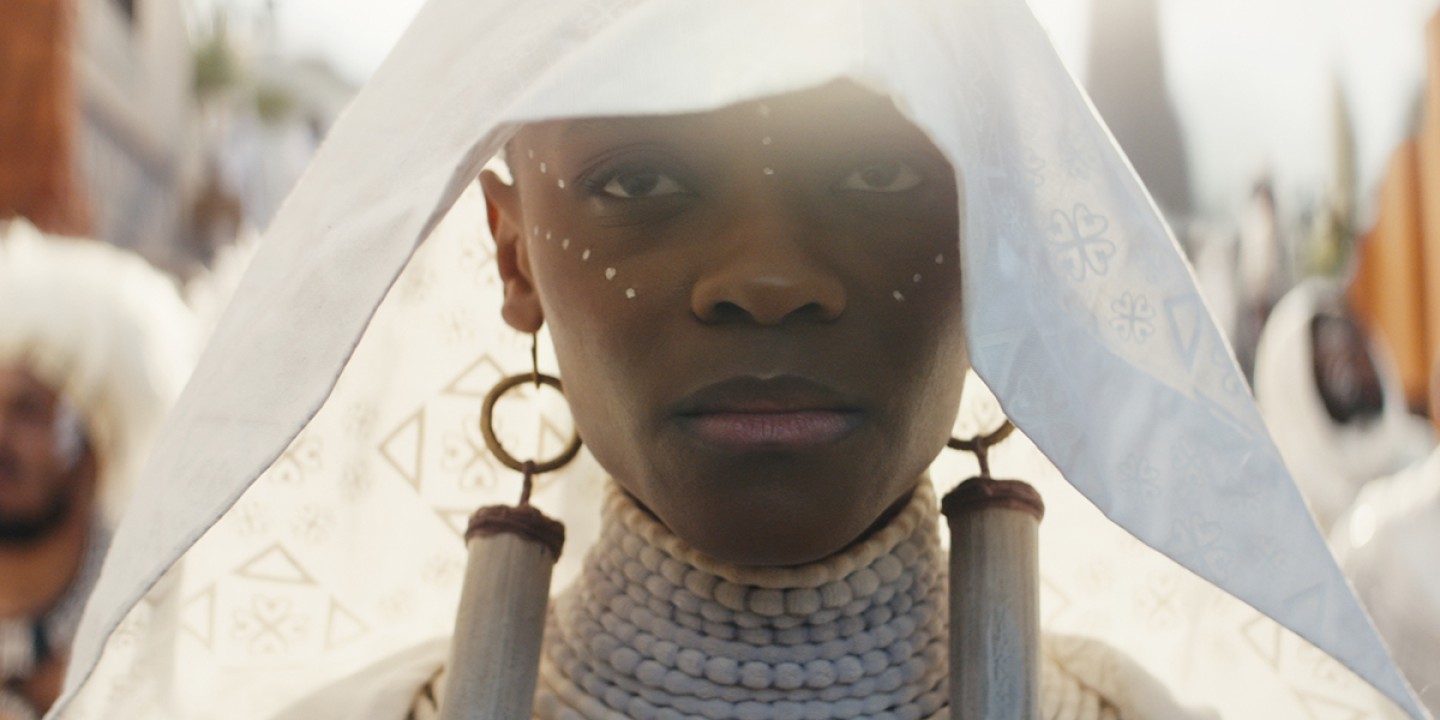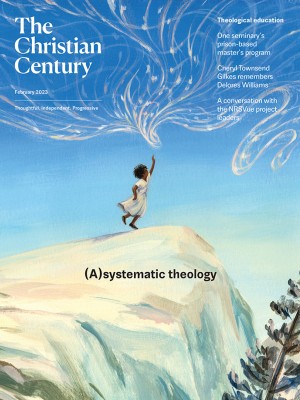How real is Wakanda?
Speculative fiction, at its best, can inspire collaboration by artists and writers and ordinary fans.

“To be young, gifted, and Black, right?” Riri Williams (Dominique Thorne) says to Shuri (Letitia Wright), joking about the burdens of being a young Black woman and the brightest student in her MIT class. Then she backpedals: “I bet y’all don’t say that in Wakanda.”
Shuri is the crown princess of Wakanda, and Black people don’t have to apologize for or explain their excellence in Wakanda; nor do they have to work twice as hard to prove themselves, like Riri, who manages a steady side hustle finishing the homework of her mediocre White peers to pay for her spot at MIT. Wakanda is the most technologically advanced nation in human history and a new global symbol of Black excellence and beauty, both within the fictional world of the Marvel Cinematic Universe in which Black Panther: Wakanda Forever (directed by Ryan Coogler) takes place and in our world as viewers.
Read our latest issue or browse back issues.
It has been four years since audiences were first invited into the fictional African country in the Marvel movie Black Panther (2018, also directed by Coogler), and we return to Wakanda in the throes of grief. King T’Challa, the Black Panther superhero protector of Wakanda, has died of an unexpected illness (paralleling the untimely death of Chadwick Boseman, the actor who played him). Within this grief there is also a subtler mourning for the loss of Wakanda’s secrecy. For centuries Wakandans hid their identity as the only country with access to vibranium—a super metal that enhances all human inventions with superlative powers—but since the time depicted in the first movie they have assumed a precarious role in the global world order.
France and the United States have resorted to a neocolonial playbook to undermine Wakandan sovereignty or steal vibranium outright in covert operations. In the opening action sequence, we watch Wakanda’s new ruler, Queen Ramonda (Angela Bassett), taking them to task on the floor of the UN, as she demonstrates just how well she and the all-female royal guard, the Dora Milaje, are prepared to protect Wakanda, even in the absence of a new Black Panther. But Ramonda especially seems exhausted by having to monitor the conniving treachery of the other world superpowers, and it is easy to imagine that Wakanda may have lost more than it gained by entering the public spotlight.
Things don’t improve when the Wakandans become aware of another secret empire hidden under the sea, populated by ancient Mesoamericans who also have access to vibranium. Like the Wakandans, the Talokan retreated from the violent greed of White European colonialism, choosing to protect their own culture and leave the surface world to its violent undoing. But the frantic search for vibranium by other countries has threatened their secrecy—and instead of waiting to be discovered, their godlike leader Namor (Tenoch Huerta Mejía) proposes an alliance between Talokan and Wakanda that will put an end to the old colonial world order once and for all.
Killmonger, the antihero of the first Black Panther movie, tempted T’Challa with a vision of a united Black empire wielding the unlimited resources of vibranium to wreak vengeance on the world. Wakanda Forever proposes a wider alliance of the colonial dispossessed. And given that the US is waiting in the wings to destabilize Wakanda and seize its resources, a little aggressive deterrence sounds pretty reasonable.
This is the most provocative idea in this fantastical movie: that a non-White global alliance—one that is fully aware of the realities of racism and colonialism—could offer a different model of power, or resource management, or collaboration. Can we even imagine a nation-state, much less an empire, not hell-bent on resource acquisition and domination in the name of profit?
Unfortunately, the demands of the Marvel Cinematic Universe curtail these explorations. Namor has a role to play in a larger MCU story line, and Wakanda needs a new Black Panther. The question of power is shifted back to an individual decision between vengeance or nobility, rehashing the moral quandaries of the first movie and curtailing—or at least delaying—any real reckoning with Wakanda as an alternative global power.
But the movie is still its strongest—and still rapturously captivating—anytime we are in Wakanda. We have more time in this visit to take in the geography, to hear hints of deeper history, to catch references to mythology, to witness ritual, and to watch glimpses of ordinary life in action. Beyond the world of the movie, these hints and suggestions are actively being filled out in an ongoing comic book canon, on websites devoted to Wakandan history and mythology, and in a gorgeous Wakanda atlas that I just added to my son’s Christmas list.
Much like the Star Wars galaxy or Tolkien’s Middle Earth, Wakanda is becoming the realest kind of fictional place, one that inspires collaboration by artists and writers and ordinary fans. Sometimes attachment to these other worlds can foster angry or nostalgic ideas about our world: fans protested racial diversity in Middle Earth in the Lord of the Rings prequel now airing on Amazon Prime, and they’ve rebelled against Star Wars stories that didn’t place dynastic heroics at the center.
But speculative fictions can also offer us visions of human life, counterfactual versions of our own history, or different ways to think about the levers of historical change—what power is, or freedom, or care for one another. Wakanda provides this for all the Riris of our world, and maybe for all of us who are willing to learn how to imagine things otherwise. I am not sure if the MCU is up for this full challenge, but maybe it doesn’t matter as long as we have Wakanda forever.






